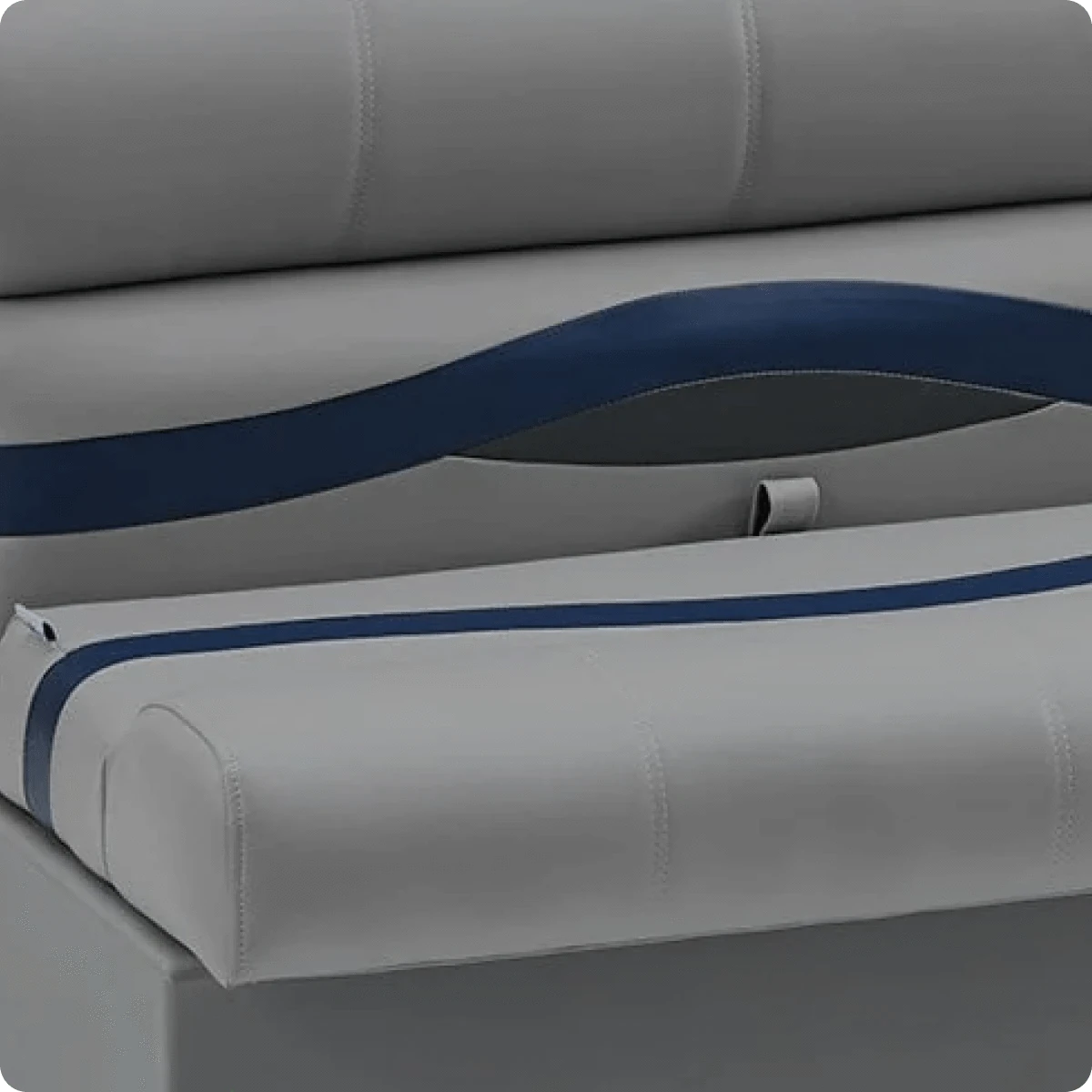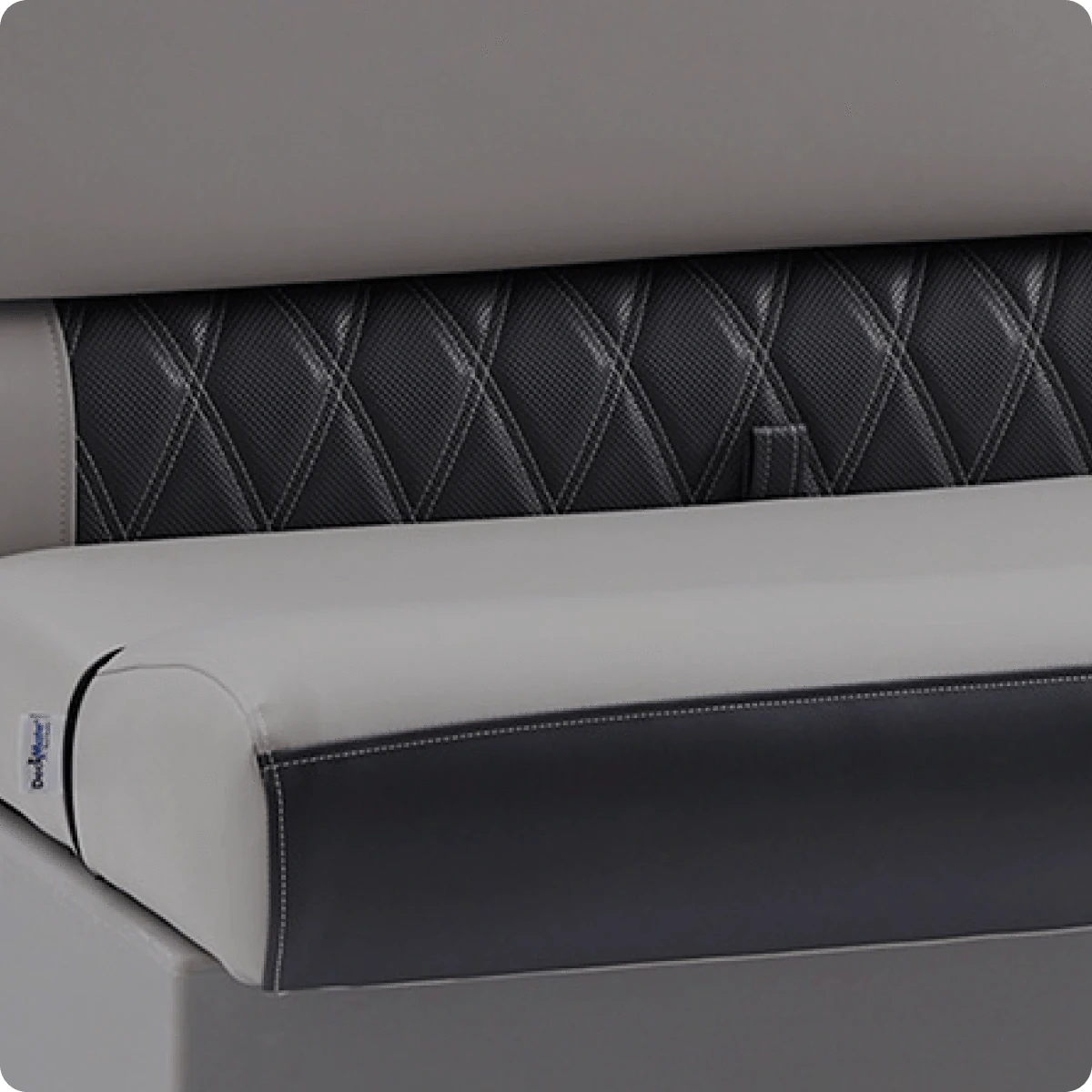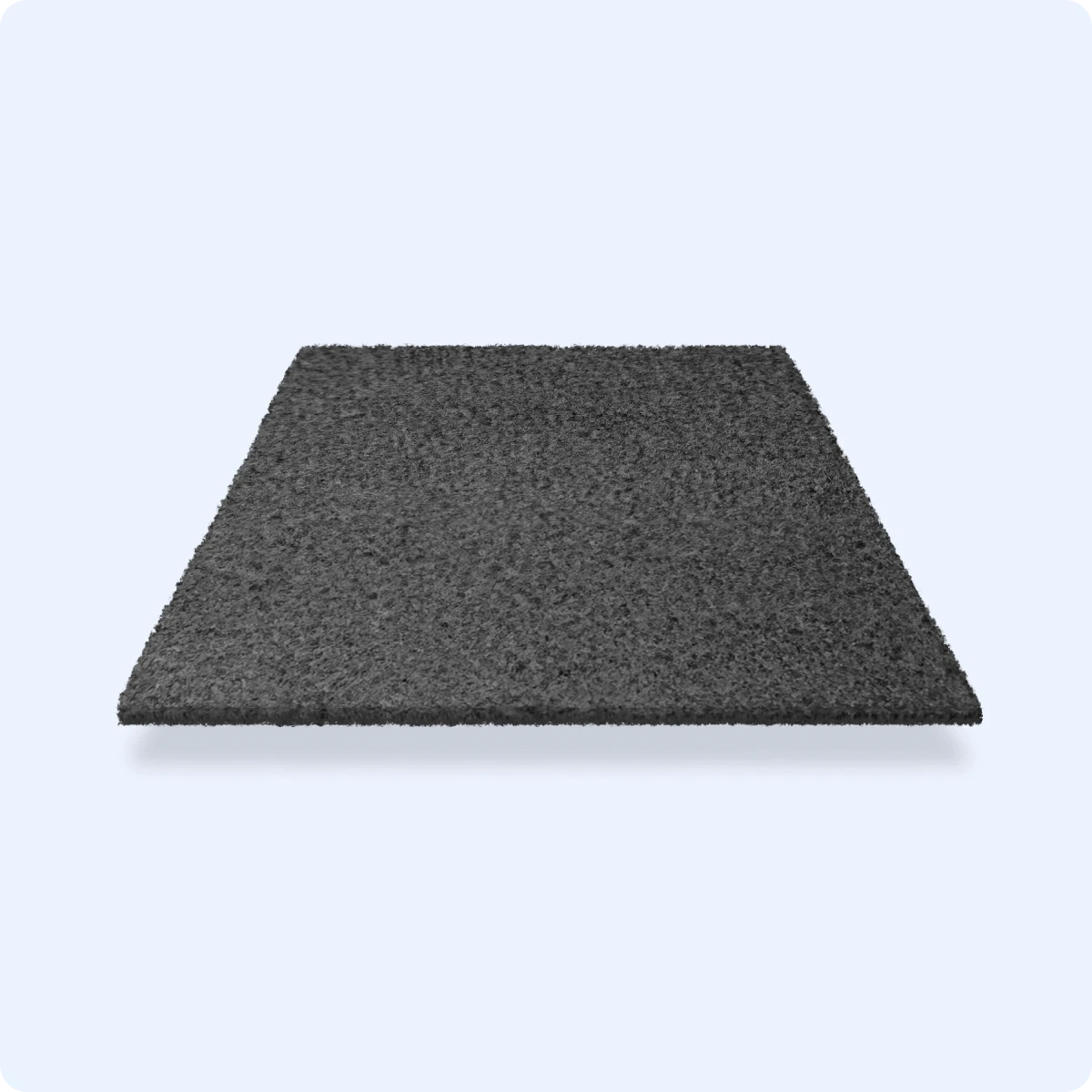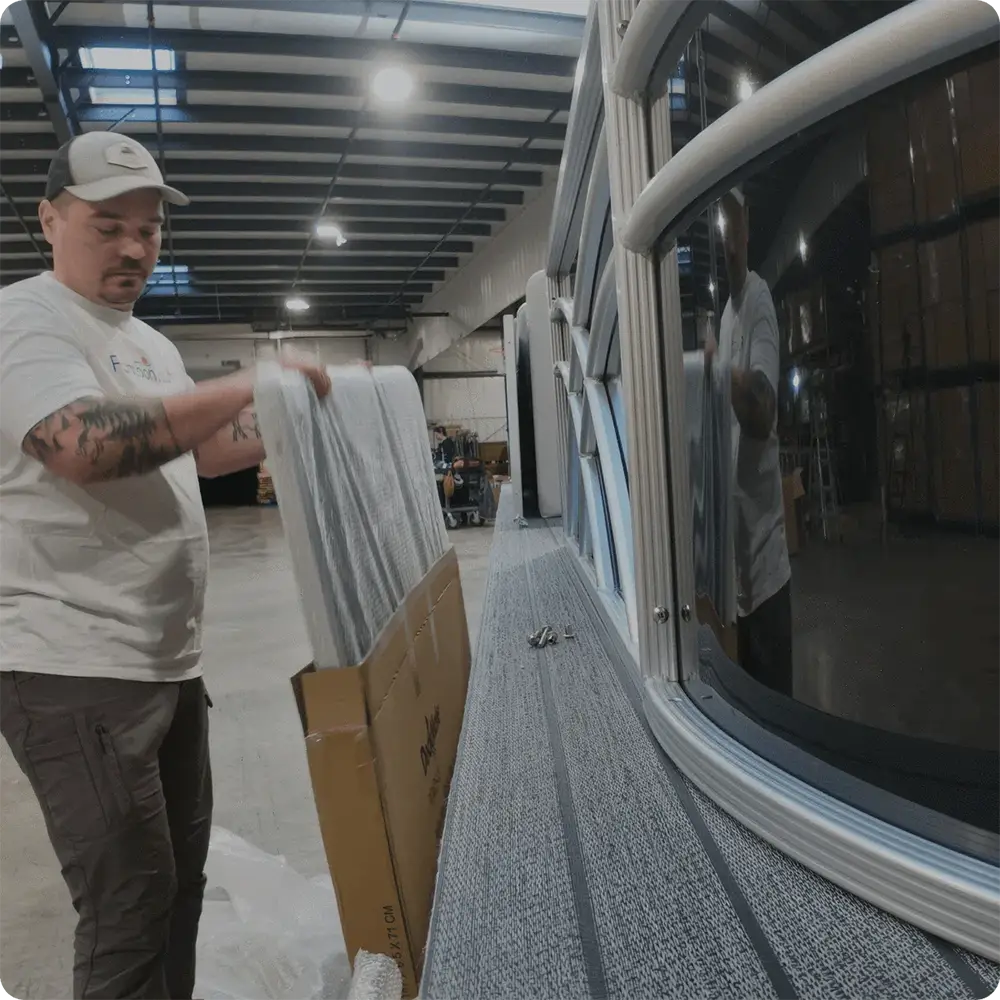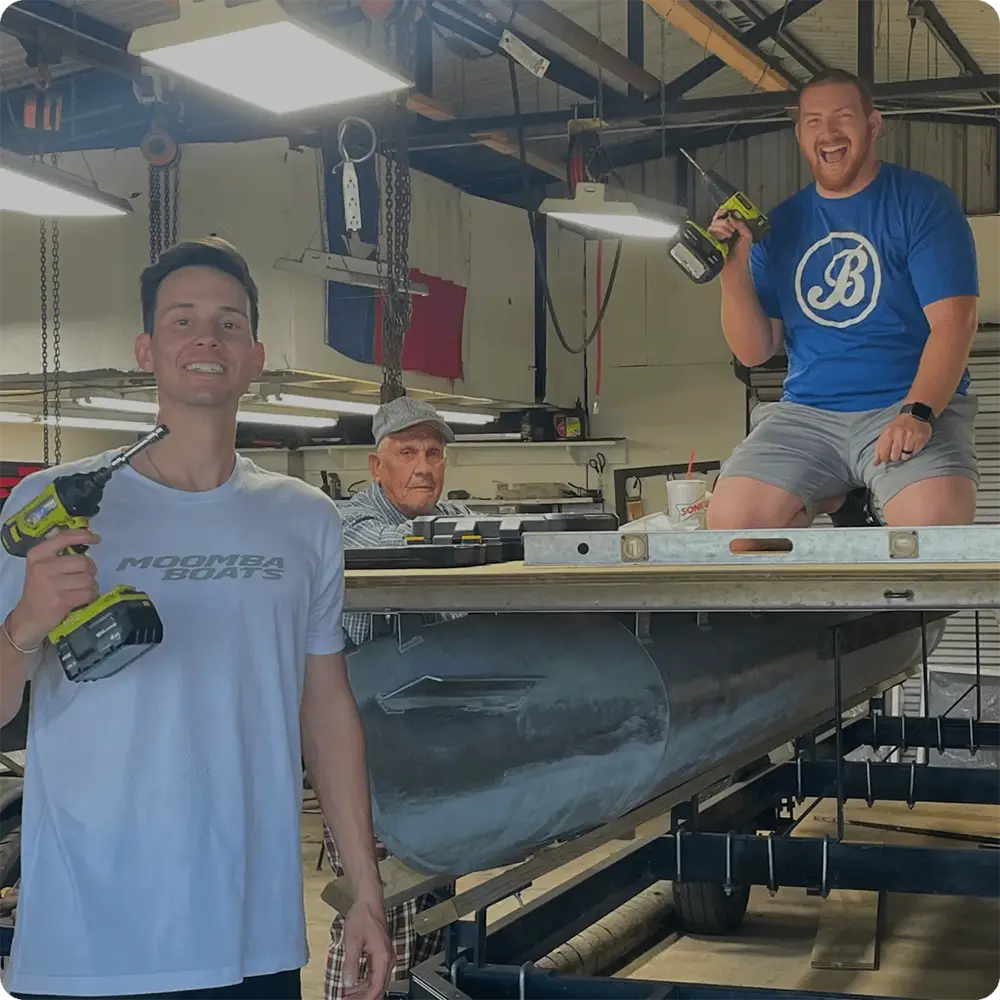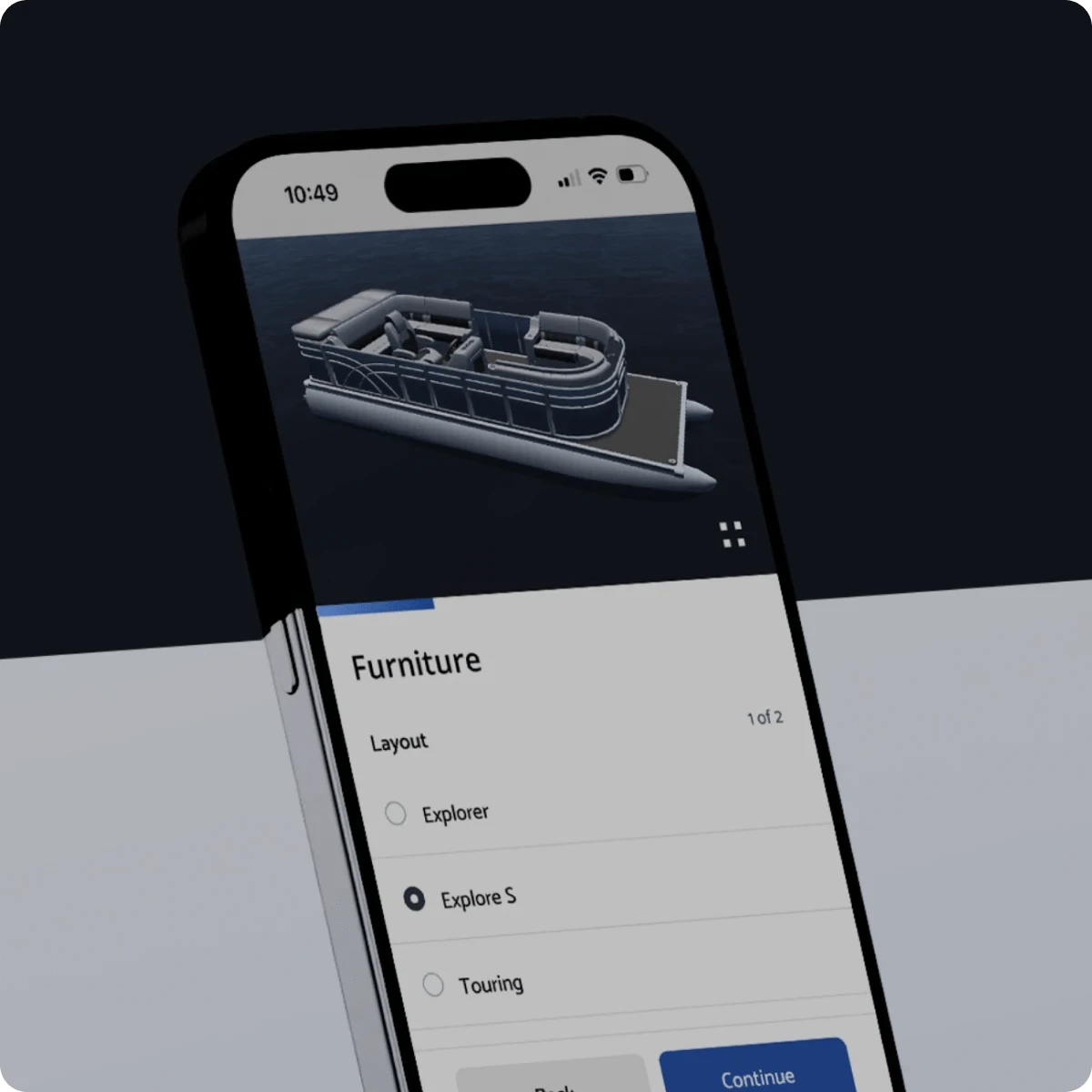How to Clean and Protect Pontoon Boat Seats from Sun Damage

Your pontoon boat is your pass to sun-soaked days on the lake–but do you ever wonder what all that sun exposure is doing to your precious vinyl seats?

Good News: Boat Seat Damage is Preventable
Sun damage and seasonal grime are the biggest culprits of boat seat damage. UV rays, moisture, and regular wear-and-tear can crack your vinyl, causing it to drastically fade faster than you'd think.
With a few simple habits and the right cleaning routine, you can keep your seats looking fresh this boating season (and for years to come!).
Follow this simple guide to keep your boat seats looking new!
Sunshine: The Enemy of Marine Vinyl
You might love the sun, but your boat seats don’t. UV rays are a major threat to the longevity of marine vinyl, breaking it down a little more with every trip on the water.
Harmful Impact of UV on Vinyl Quality
Sun exposure doesn't just dull the seat color; it can also cause your seats to become dry and brittle by weakening stitching and deteriorating padding.
On those extra hot summer days, heat can even warp marine vinyl, leading to more obvious damage that’s harder to fix with time.
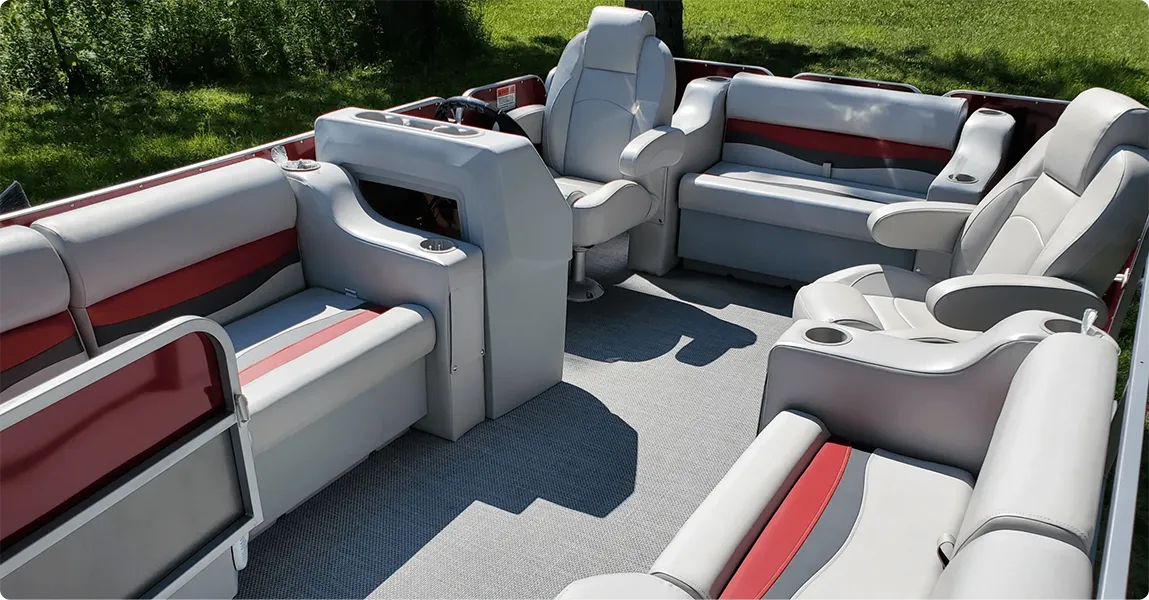
Protect Your Pontoon Boat Seats from Damage
Marine-grade boat furniture, like the classic, premium, and luxury lines from PontoonStuff, is designed to be out in the elements. They offer a level of UV-resistance and anti-mildew features that other materials do not.
However, just because pontoon seats are built for the outdoors doesn’t mean they’re immune to constant exposure to sun, rain, dirt, and even bird droppings.
Here’s where to start when protecting your boat, especially when it’s not in use.
Use a Full Pontoon Boat Cover or Seat Covers
When docked or stored outdoors, a full boat cover is one of the best shields for your pontoon boat interior. It also keeps pollen, dust, and tree sap from turning your vinyl into a sticky mess and prevents problems from the elements and wildlife.
If a full cover feels like too much of a hassle during boat season, individual boat seat covers are a great alternative. They’re lightweight, quick to use, and perfect for short-term protection between rides. A basic barrier between your seats and the sun is better than nothing at all!
Apply a Boat Seat UV Protectant
Marine vinyl needs sunblock, too! A UV protectant adds a layer of defense against harmful rays, but not all are created equal. Make sure you choose a product that’s marine-grade, non-greasy, and formulated with UV blockers to ensure it won’t break down your vinyl or leave a sticky residue.
Apply your seat protectant of choice at least monthly during boating season, or more often if you tend to spend extra time on the water in the summer. It’s an easy step that makes a huge impact!
Practice Good Pontoon Boat Storage
Docking in shaded areas helps reduce the amount of direct sun your seats soak up each day. If shade isn’t an option, you can always opt to rotate your boat's position each time you park it so one side doesn’t take the brunt of the sun’s heat every time.
Perhaps the most stylish seat protector is a Bimini top. In addition to boat protection, these add shade for you and your passengers, making your ride more comfortable and preserving your boat seats in the process.
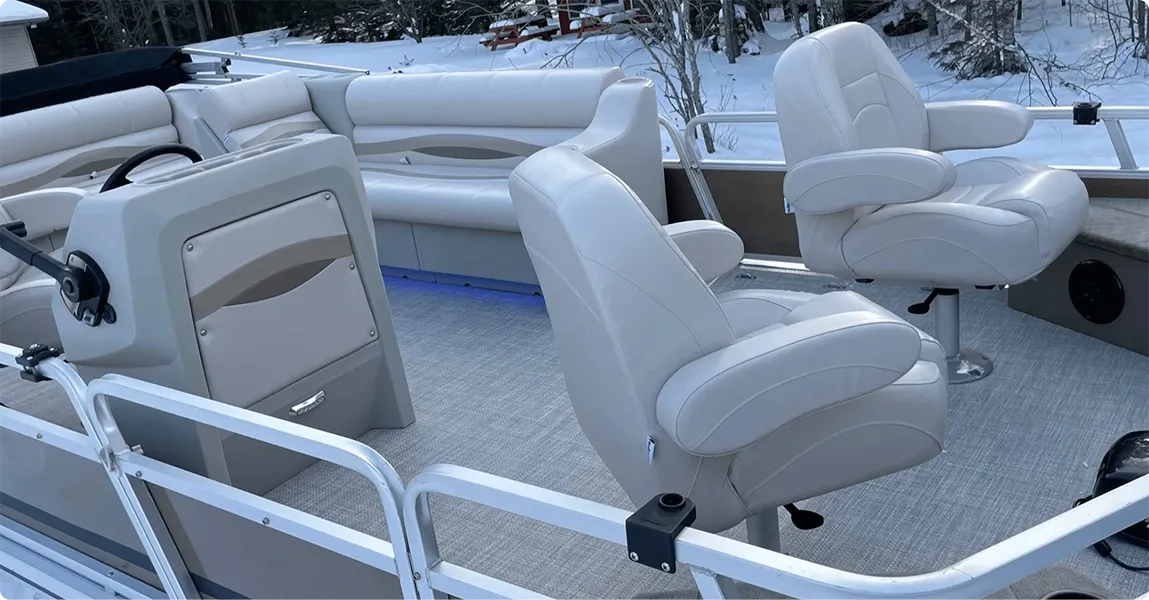
How to Clean Pontoon Boat Seats (The Right Way!)
Even with great sun protection, your seats still need regular cleaning! Dust, sunscreen, sticky fingers, and clammy towels all contribute to wear and tear.
Here's how to stay ahead of the grime without accidentally damaging your marine vinyl.
Weekly Boat Seat Wipe-Downs
An easy clean after each trip on the lake keeps the buildup at bay. Use a soft cloth with mild dish soap and warm water, and a microfiber cloth to lift dirt without scratching the surface.
Skip household cleaners and conditioners for your boat seat care routine. While they may seem convenient, many contain harsh alcohol or oils that can degrade marine vinyl even more quickly. Always avoid using straight bleach, which can weaken stitching and dry out vinyl faster than the sun itself. Accidents happen, so if you truly need a deep disinfectant, dilute your bleach carefully and rinse well.
Finally, make sure you get your cloth deep into the seat stitching, too (this is where moisture and mildew love to hide).
Deep Clean Pontoon Seats Monthly (or More)
Once a month (or more often during peak season), do a more thorough cleaning with a marine vinyl cleaner or mildew remover that is designed to break down tough grime without harming your seats.
Before you throw in the towel, finish by drying your seats with a clean rag to prevent mildew from forming in creases or seams (that would defeat the purpose after all!)
Mold & Mildew Prevention for Your Pontoon
Despite being made for the water, prolonged moisture is the culprit of dirty, moldy marine vinyl. After a day on the water, make sure your boat seats are dry before covering the boat, and don’t let water pool or sit on the cushions.
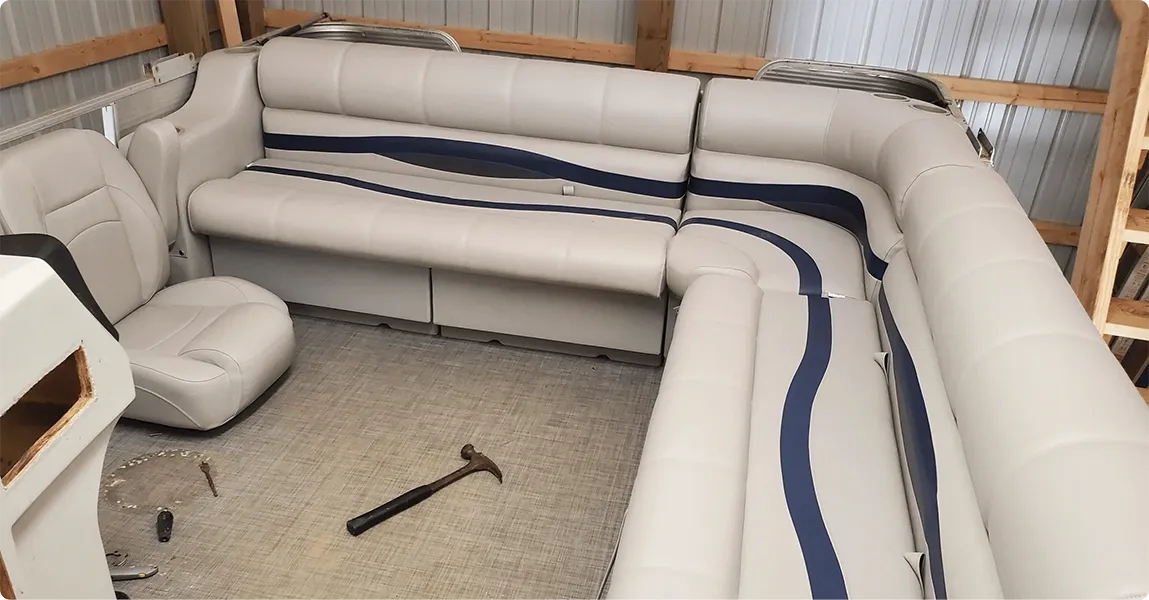
Avoid These Common Boat Seat Care Mistakes
Even with the best intentions, it’s easy to accidentally damage your seats. Keep these common mistakes off your list and don’t overthink it!
Pontoon Boat Seat Cleaning Nos
- Using bleach, acetone, or household cleaners
- Scrubbing with rough brushes
- Leaving the cover off for prolonged periods (a weekend or longer)
- Ignoring small stains or spills
Avoiding these mistakes can make a big difference in the long-term condition of your pontoon interior.
Make Pontoon Boat Seat Care a Habit
A little routine care goes a long way. By cleaning regularly and protecting your seats from the sun and moisture, you’ll preserve the look and value of your pontoon boat for years to come.
Shop PontoonStuff for recommended covers, cleaners, and UV protectants to keep your boat looking brand new, season after season.
If you ever find yourself in need of a pontoon boat seat replacement, we have a wide selection to refresh your pontoon and get you back on the water!



